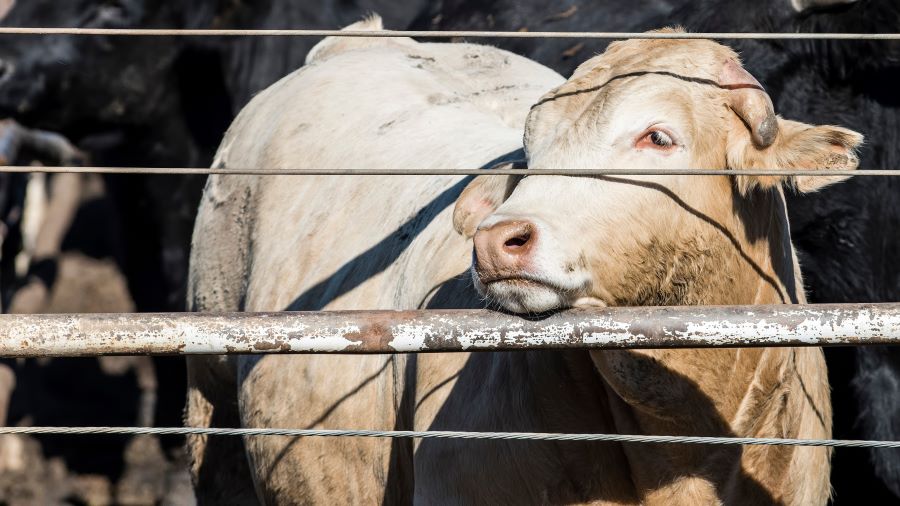
What Is a CAFO?
Factory farms tend to move in and out of the public consciousness. People become briefly alarmed at news of antibiotic-resistant bacteria or epidemics. But they continue to purchase inexpensive meat at the grocery store as headlines change to other topics. CAFOs, the official term for industrial-scale meat-growing facilities, have serious implications for animal rights, environmental pollution, and even environmental justice. Although CAFOs produce nearly all meat eaten in America, consumers can find better options.
What Is a CAFO?
CAFO stands for concentrated animal feeding operation (or sometimes confined animal feeding operation). In a telling detail, the National Pollutant Discharge Elimination System, rather than the FDA, legally defines CAFOs.
It defines CAFO as any animal feeding operation where:
- Animals are kept and fed for 45 days or more in a 12-month period, and
- Crops or vegetation are not sustained during the growing season over any portion of the facility.
CAFOs are categorized by the number of animals maintained, without regard to density, and by the method of wastewater discharge.
The first CAFOs developed in the 1950s to grow chickens. The practice spread to the pork and beef industries in the 1970s even though the EPA identified feedlots as point sources for pollution in the 1972 Clean Water Act. CAFOs became standard by the end of the 20th century. By 2011, four companies produced 81% of cows, 73% of sheep, 50% of chickens, and 60% of hogs eaten in America. CAFOs have only become more concentrated since then. Some species, like beef cattle, spend only a short period in confinement before slaughter. Others, like chickens and pigs, may spend their entire lives confined.

Humane Issues
CAFOs can harm the health and welfare of both animals and people. Proponents argue that confined animals receive consistent, quality feed and protection from weather extremes. But the size of confinement areas, which are regulated at the state level, can be appallingly small. It may be hard to quantify the impacts of boredom and stress from confinement, but they are real. Stress behaviors like tail biting have resulted in the routine docking of piglets’ tails in American swine operations. And stressed chickens engage in harmful feather-pecking behaviors that commercial poultry farms prevent with the painful and much-criticized practice of beak trimming.
Close contact in crowded quarters greatly increases the risk of infections. This has led to the widespread preventative use of antibiotics (which are also used to stimulate growth) in CAFOs. Overuse of antibiotics contributes to the development of antibiotic-resistant pathogens, making outbreaks harder to treat. It also increases the risk to humans, as many bacteria found on livestock (such as Salmonella, E. coli, and Campylobacter) can cause foodborne diseases in humans.
Water Pollution
Most of the environmental issues associated with CAFOs are linked to the huge amounts of manure that are generated in a relatively small space. A large CAFO with 800,000 pigs could produce more than 1.6 million tons of waste a year. That’s one and a half times more than the annual sewage produced by the city of Philadelphia.
As evidenced by the regulatory structure, water pollution is the primary concern. Cities have wastewater treatment facilities, but CAFO manure is collected in an open lagoon, where solids settle to the bottom and decompose anaerobically. The nutrient rich liquid layer is applied to fields as a fertilizer. Ground application requires appropriate weather conditions and can result in overfertilization, stormwater and groundwater contamination by nitrogen, phosphorus, and pathogens. Lagoon failures release untreated waste into nearby areas.
Air surrounding CAFOs can be polluted with ammonia, hydrogen sulfide, methane, and particulate matter, all of which present human health risks to farmworkers and nearby residents. Because CAFOs are geographically concentrated, a few communities are disproportionately impacted by them. The environmental justice impacts of CAFOs affect public health in mostly rural low-income communities and communities of color.

Avoiding CAFO Meat
Most meat in the US is grown in factory farms. Of course, eating a vegan diet eliminates the issue of sourcing animal proteins. But meat eaters can find humanely raised meats and more sustainable meat choices. Some grass-fed beef skips the feedlot on its way to your plate; sustainable turkeys are available if you look hard enough; and you might even grow your own backyard chickens for meat or eggs. If you can’t grow your own, getting to know your local farmer at the farmers market or specialized butcher is the best way to source meat.
To help ensure that all meat is grown more humanely, let your representative in Congress know that you support the Pigs in Gestation Stalls (PIGS) Act, H.R. 2939, to ban gestation crates for breeding sows. Look up your state’s regulations and contact your state legislators to support humane standards. Even if you live in a state where CAFOs are not common, your state could, like Washington, ban the sale of inhumanely grown products regardless of where the animal was grown.
Services Marketplace – Listings, Bookings & Reviews